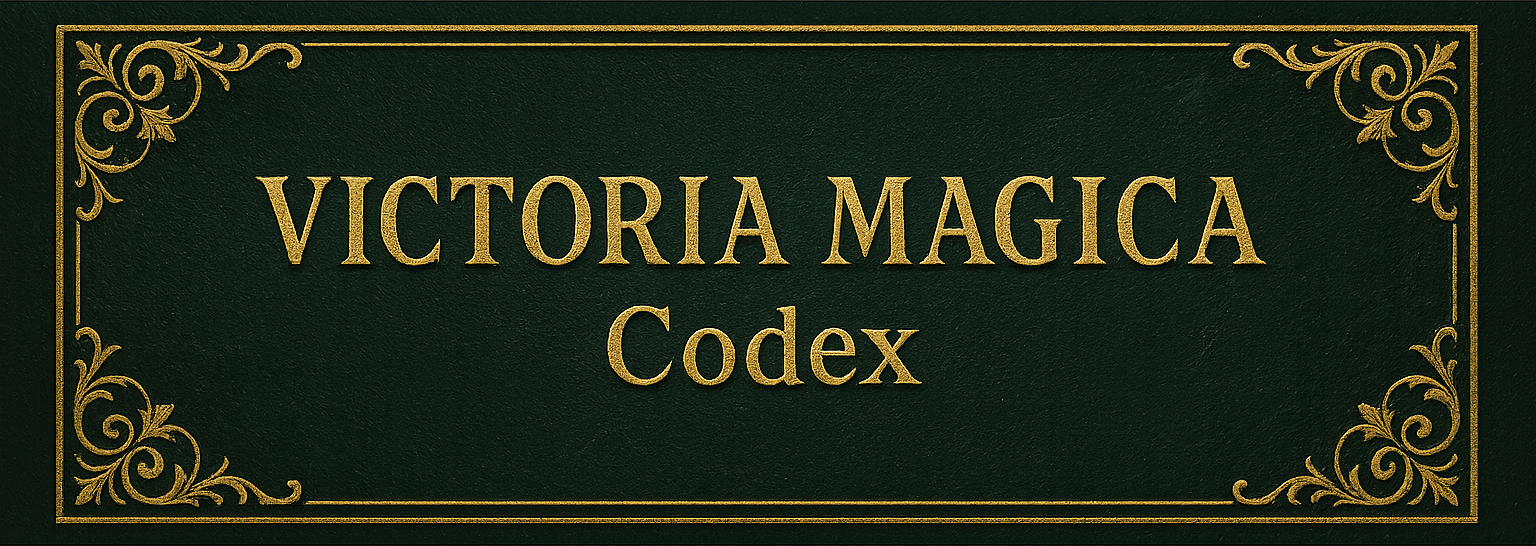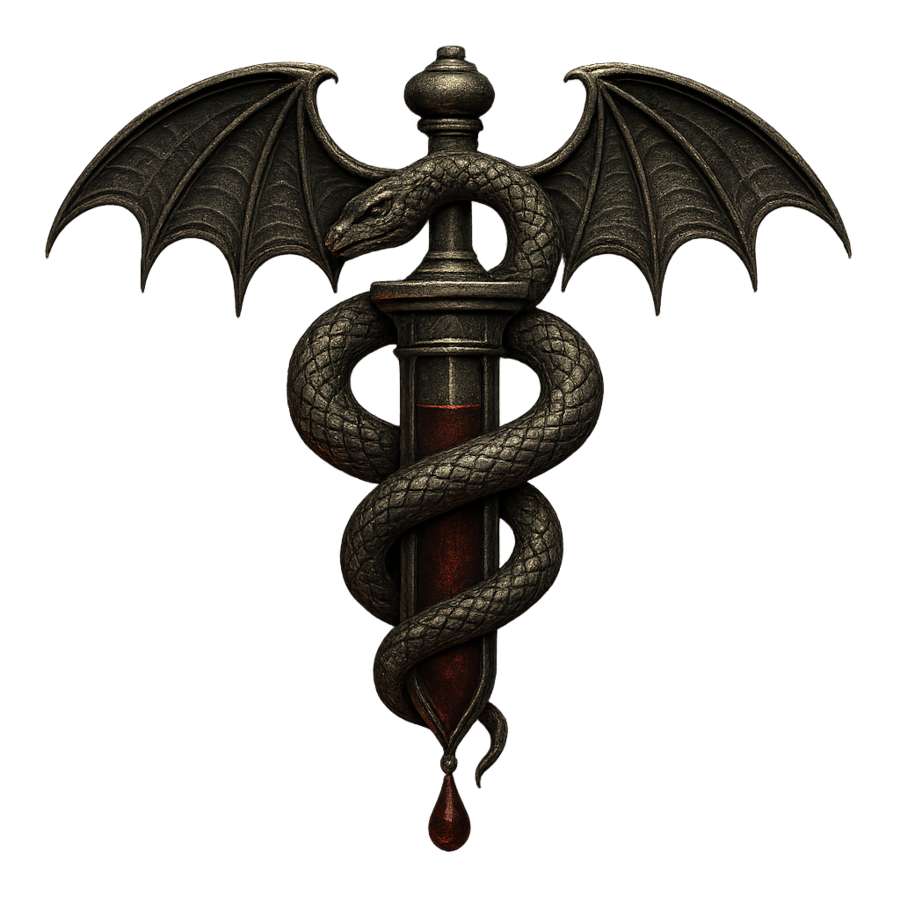Vampirism
⚠️ Content Warning
This article may contain mature themes, including homoerotic content, complex power dynamics, sexual encounters with vampires and anthropomorphic beings, as well as other adult material.
Reader discretion is advised.
TABLE OF CONTENTS is in the World Navigation
Vampirism, formally referred to as The Rebirth or The Crimson Condition, is a transformative state that occurs when a Human undergoes a ritualistic exchange of blood with a Vampire. Far from being a disease in the traditional sense, vampirism is a controlled, alchemical-necromantic mutation that rewrites the boundaries between life and death. It grants immortality, heightened physical abilities, and a profound alteration of mind and body — at the cost of blood dependence, sunlight sensitivity, and the ever-looming threat of losing one’s humanity.
Though feared by many and romanticised by more, vampirism is not an epidemic — it is a choice, a condition, and for some... a calling.
Transmission & Vectors
Vampirism, or the Condition of the Rebirth, is transmitted exclusively through a deliberate ritual known as the Rebirth. This occurs when a Vampire drains a mortal to the brink of death and then feeds them a portion of their own Vital Ichor (vampiric blood). The condition is not airborne, waterborne, nor transmissible through casual contact or feeding alone.
The condition becomes infectious only during the Rebirth, and only through blood-to-blood contact initiated by a vampire. Feeding on humans does not automatically transmit the condition. Ghouls are created by other means and are not part of this vector.
Causes
The cause of Vampirism is an alchemical-necromantic transformation triggered by a controlled death state followed by the ingestion of Vital Ichor. It is believed to awaken dormant elements within Human biology — possibly ancient, recessive traits or remnants of something primordial — and reshape them with necrokinetic energy.
Environmental factors play no role. However, the strength and nature of the resulting Vampire depends on the vitality of the human, the bloodline and power of the sire, and potentially unknown metaphysical forces. The condition cannot arise spontaneously or from accident — only from intentional ritual.
Symptoms
The transformation manifests in both physical and psychological stages:
Early Symptoms (first days to months):
- Skin and eye pigment loss (progressing toward full albinism)
- Heightened sensitivity to light
- Extreme hunger for blood
- Increased strength, speed, and sensory overload
- Emotional instability (rage, lust, detachment)
Mid-Stage (first 1–3 years):
- Fully developed albinism
- Retractable fangs and claws
- Total loss of traditional Human digestion
- Beginning psychic and supernatural abilities
- Flattening of emotional affect
Late-Stage / Chronic Traits:
- Immortality (barring destruction)
- Strong regenerative capability
- Altered aura and psychic presence (Gravitas)
- Entrückung (in elder cases): changes in thought patterns, sense of identity, and eventual physical mutations
Treatment
There is no known cure for Vampirism once the Rebirth is complete. The condition is permanent and self-sustaining.
Attempting to reverse the process through magical or alchemical means has universally resulted in either failure or ghoulification, a far more unstable and dangerous condition.
The only definitive way to “treat” vampirism is through destruction of the Vampire, typically via:
- Fire
- Decapitation
- True Damascus steel
- Powerful magic
Preventative measures, rather than curative ones, are the only viable approach.
Prognosis
Once transformation is complete, the prognosis is stable but conditionally volatile.
Outcomes vary depending on blood intake, discipline, and environment:
- Stable vampires may live indefinitely, maintaining autonomy and identity.
- Thin-blooded or undisciplined vampires risk slipping into madness or hunger states.
- Ghouls are a separate outcome caused by improper feeding or blood addiction and are not part of the typical vampiric progression.
- Entrückung represents the furthest point of metaphysical progression: a form of alien, detached existence.
The condition is not fatal—rather, it makes death difficult. But suffering is still possible.
Sequela
Late-stage complications and resulting conditions may include:
- Entrückung – a state of mental and spiritual alienation leading to physical and psychic mutation.
- Blood Madness – loss of control due to starvation or trauma.
- Sunburn necrosis – slow, painful burning caused by exposure to sunlight without protection.
- Addiction to specific blood types, emotional states, or sources.
- Loss of empathy and moral detachment over time.
Affected Groups
Only humans can be transformed through the Rebirth.
No other species are known to be susceptible to Vampirism. Age, sex, and body type do not influence susceptibility, though:
- Young adults have the highest success rate.
- Ill or weak individuals often fail the transition and die or become unstable.
- Certain bloodlines and magical practitioners may resist transformation or mutate unusually.
Hosts & Carriers
Vampirism has no non-sapient animal hosts and is not carried by plants, animals, or insects.
Ghouls, however, may act as violent vectors of chaos but cannot transmit vampirism. They are considered by-products of the condition, not infectious agents.
Prevention
Prevention relies on:
- Avoiding exposure to vampiric blood during mortal trauma
- Refusing the Rebirth ritual (consuming Vital Ichor)
- Use of ritual wards, alchemical inhibitors, or religious charms (limited effect, mostly psychological)
- Education and awareness, especially in Stranovia, where most Rebirths are consensual and regulated
There is no vaccine or magical prophylactic that prevents transformation once the ritual has begun.
Epidemiology
Vampirism does not spread like a plague, but rather through rare and individual cases.
Outbreaks of ghouls (not vampires) are more epidemiologically relevant. Improper or excessive feeding can result in ghoulification, leading to chaos and often civilian casualties. Such incidents are typically localised and contained by orders like the Zorya Nocturne.
Mass vampirism events are historically rare, often tied to wars, cults, or collapsed noble lines with no regard for the Natural Order.
History
The earliest confirmed case is recorded in Stranovia, 1536, in documents archived at Castle Olteanu. By this time, the condition was already understood well enough to be managed and ritualised.
Major known outbreaks:
- The Broken Covenant Rebellion (17th century): A cluster of unsanctioned Rebirths led to the rise of dozens of untrained vampires, most of whom were either destroyed or became ghouls.
- The Crimson Ball Incident (1831): A mass feeding disguised as a noble gala, resulting in twelve ghoulings and three executions.
Today, Vampirism is not feared as a disease, but recognised as a condition of transformation, regulated by state and Order alike.
Cultural Reception
Culturally, vampirism occupies a complex space:
- Among common folk, vampires are feared or mistrusted due to their unnatural appearance and potential for violence.
- In noble and academic circles, vampires are often viewed with fascination, prestige, or even envy.
- The condition is neither shameful nor holy — but those who spread it irresponsibly are universally condemned.
Victims of unwilling transformation are often offered protection or guidance. Those who transform consensually are expected to accept the consequences.
The Crimson Condition




Comments